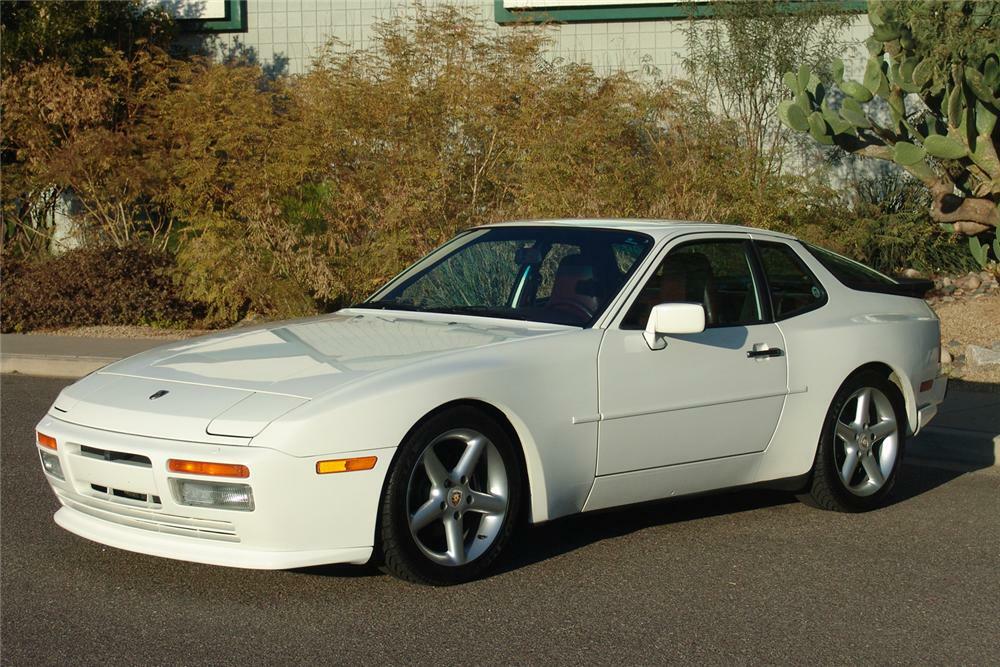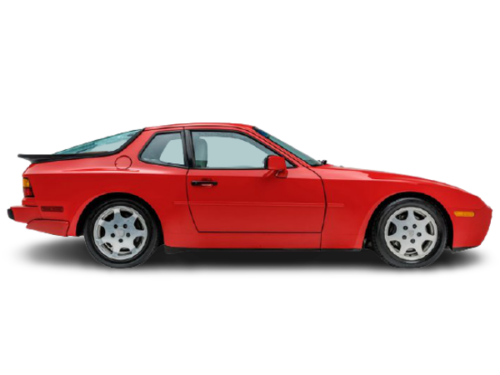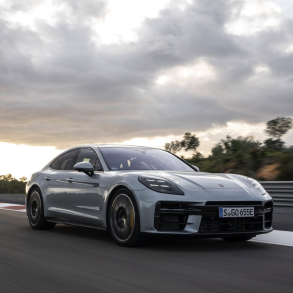(1987 – 1988) Porsche 944 S Coupe – Ultimate Guide
In 1987 Porsche debuted the 944 S, the “S” standing for “Super”. It looked sportier than its non-S version and had substantial modifications to both the interior and the engine and offered more performance to Porsche customers.
This “Super” Porsche 944 was fitted with a more high performance version of the naturally aspirated four cylinder engine. The 2.5-liter inline-four engine fitted with 4-valves/cylinder technology. It offered more power and torque than the regular, 2-valves/ cylinder ones. The 2.5 L engine (M44/40) featuring a self-adjusting timing belt tensioner and this marked the first use of four-valves-per-cylinder heads and DOHC in the 944, derived from the 928 S4 featuring a redesigned camshaft drive, a magnesium intake tract/passages, magnesium valve cover, larger capacity oil sump, and revised exhaust system. The revised Motronic 2 engine management system featured dual knock sensors for improved fuel performance for the higher 10.9:1 compression ratio cylinder head.
Like the 944 Turbo, the 944 S received progressive springs for improved handling, larger front and rear anti-roll bars, revised transmission and gearing to better suit the 2.5 L DOHC engine’s higher 6,800 rpm rev limit. Floating 944 calipers were standard, but the rear wheel brake circuit pressure regulator from the 944 turbo was used. The wheel bearings were also strengthened and the brake servo action was made more powerful. Small ’16 Ventiler’ script badges were added on the sides in front of the body protection moldings.
On the safety side, the 944 Turbo was the first car in the world with a dual airbag fitted as standard. The ABS was on the options list, as was a limited-slip differential. The alternator capacity was 115 amps.
Generally the 944 S was a higher performance version of the stock 944. Power was 190 bhp @ 6000 rpm and torque was a solid 170 lb-ft @ 4300 rpm. It was good enough to get the 944 S to sprint from 0 – 60 mph in 7 seconds flat and cover the quarter mike in 15.6 seconds on its way to a top speed of 142 mph. It’s performance placed it right in between the standard 944 and the Turbo versions. Overall, power delivery was smoother than the Turbos and more enjoyable than the regular 944.
Optional extras included dual air bags and a limited slip differential, ABS braking, Fuchs wheels, and a “Club Sport” package. The Club Sport touring package (M637) gave you the lightweight 16-inch CS/Sport Fuchs 16×7 and 16×9 forged alloy wheels. This version was raced in Canada, Europe and in the IMSA Firehawk Cup Series held in the U.S. Production was only during 1987 and 1988.
At the front, a new bumper was installed and it included more grilles to cool the engine. It kept the pop-up headlights from its predecessor, and in those times that was considered an ultimate reflection of a sports-car. An integrated, hard-rubber, a spoiler was added at the back of the car, on the lift-gate. It featured body-colored bumpers, with a rubber strip on the one in the back. The 944 S badge was added to the tailgate, under the spoiler.
The interior was fitted with four seats, but only the front occupants could sit well. The tiny rear seats were fitted for very small children due to lack of legroom. For the driver, there was a new instrument cluster with four dials and six gauges. The biggest ones were, of course, the tachometer and the speedometer. The AC was offered as an option. Even though the 924S was produced between 1987 and 1988, it kept the older style interior, dashboard and console. The transaxle also retained the double-side mounting and steel gas tank from the earlier cars, as well as the steel front control arms and VW Rabbit lower bar joints.
But the 944 was beginning to face the same fate as its predecessor – Porsche had not advanced to model quick enough to keep up with competition, and the car was very expensive for what it was, Porsche or not. Sales began to fall in 1987, and even with some limited editions in various markets, along with the new 8v 2.7 liter engine, the slide proved unstoppable for the 944.
Note: In the early part of 1989 the 944’s engine capacity was increased from 2.5 liters to 2.7 liters in Europe). The increase being achieved by giving the engine a bore of 104mm and stroke of 78.9mm. This increase prompted Porsche’s engineers to use a “Siamese-cylinder” arrangement, so called because the cylinders are all joined together with no coolant passing between them.












